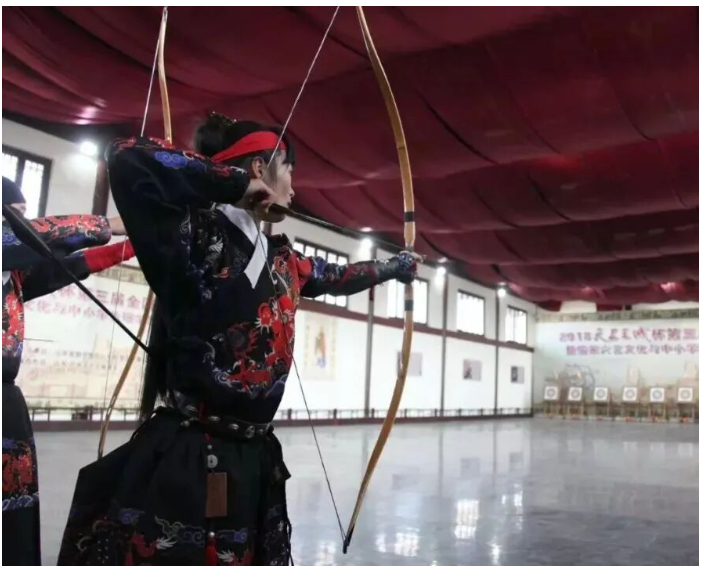Release time:2025-09-16 15:28:04Clicks:author:SPG ArcheryMain categories:Bows, Arrows, Archery Accessories

Key Points of Traditional Archery
Traditional archery has a much lower tolerance for error than modern archery. Stability and consistency in every position depend almost entirely on the archer's movement. From this perspective, traditional archers should adhere to more rigorous movement standards than modern archers. The long-draw style of the Ming and Qing dynasties further increases the difficulty of entry, necessitating a rigorous, standardized, and progressive practice method.
This article briefly introduces some key points of my personal practice method. The movement should be fully extended. The key characteristic of long-draw shooting lies in the full extension of the shoulder and arm movements. This extended movement allows for a close-to-straight force application, maximizes skeletal support, and ensures a straight and stable arrow flight.
Two aspects can be used to determine whether the movement is fully extended: first, the draw length should reach or slightly exceed half of the arm's span; second, the shoulders should not be hunched or tensed, the forearm should not bend downward or upward, the back arm should be level with the shoulder (see the aiming section of this essay for top and front views), and the chest should be flat and the back muscles should be tight. Keep your body upright and apply force evenly. Correct archery movements must be straight and straight. Improper postures such as stretching the head, shrugging shoulders, twisting the body, bending the wrist unnaturally, hunching the back, standing unsteadily, and having a misaligned center of gravity are all incorrect movements that must be corrected (see the "Body Technique" and "Long Draw Length" sections of the essay for details).
Stretching and straightening the movement, with the upper body stabilizing the crosshairs, will naturally lead to even force application. Maintain stability and composure. Maintaining straight and straight movement must be maintained until the release is complete and the rest of the movement (the pause in the movement) is complete before relaxing. If meticulously straightening the bow before releasing the bow is lost at the moment before releasing it, or if the balance is lost immediately after releasing it, the result will be a failure, wasting all the effort. To achieve stability, you first need a certain level of physical strength; your strength must be greater than the strength of the bow. Then, maintain a calm posture and rhythm throughout the entire archery process, executing each step in a slow and smooth rhythm, and exerting sufficient effort to control and direct the bow's force.
Practice method: In addition to a bow of normal strength, you should also have a beginner bow. During the basic stages of archery, a light bow is essential for easy and safe practice. A light bow allows the practitioner time to carefully experience the subtle sensations of applying force and allows for fine-tuning of the movements. Even if unfamiliarity leads to accidents such as blank releases, hand strikes, or misfires, the consequences are relatively minor. If possible, practice shooting at a close target at home daily. The target positions are shown in the first image of the aiming section of this essay. The amount of practice doesn't need to be extensive; a few dozen arrows per day is sufficient. The key is to practice as frequently as possible, and to constantly monitor your form. If frequent archery practice is inconvenient or you don't have a guide, you can prepare a simple blank bow made of a thick rubber band, plastic tubing, or a wooden stick or bamboo piece for simulated practice. During practice, you can look in the mirror or record yourself to check for any form errors.
It is important to remember that whether practicing with a beginner bow or practicing with a simulated bow, you should approach your movements with the same care and attention as you would in real archery practice. This is the only way to achieve effective results. Beginner archery is essential for those who have little practice or lack strength. If you encounter problems with a bow of normal strength and struggle to improve, interspersing practice with beginner bows or practicing in front of a mirror will help pinpoint the root cause. During practice, if you notice an arrow's landing is off-center, first review whether your force application during the push and pull is symmetrical and straight, then consider other issues such as your technique and equipment. If you notice an arrow's flight is unstable, wobbling violently, or skewed towards the target, you need to comprehensively consider and examine various factors, including force relationships, technique details, body center of gravity stability, equipment, and even clothing obstruction. Unstable arrow flight may be caused by a single factor or multiple factors. First, ensure you master the most basic and critical key points of your technique, and the influence of external factors will naturally become apparent.
Patience and perseverance are key to developing traditional archery skills. For those with no or a weak foundation, the practice process may be challenging. However, since you've chosen this sport, strive to excel and avoid any regrets. It's okay to shoot poorly at first; just improve each arrow and strive for excellence. Maintaining a calm and composed mindset is crucial. If you become impatient (the pace gets faster and faster, the movements become sloppier, and the more you try to shoot, the worse your shot becomes), complacent (you'll get a good shot anyway, so a little difference doesn't matter), lazy (don't care if the movements are perfect, just getting close is fine), or withdrawn ("I can't do it, I can't do this, I can't shoot accurately with this thing"), then practice will lose its effectiveness and may even foster ingrained bad habits. Over time, practice will remain merely "playing around." This shows that it's not just the movements that need to be relaxed, correct, and unhurried.